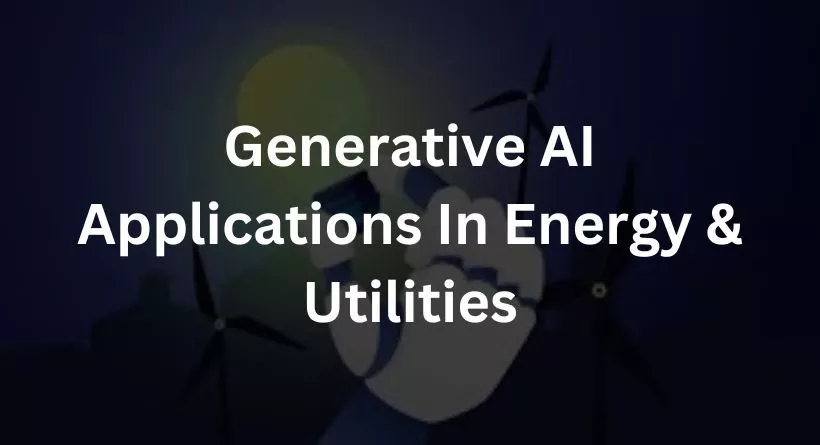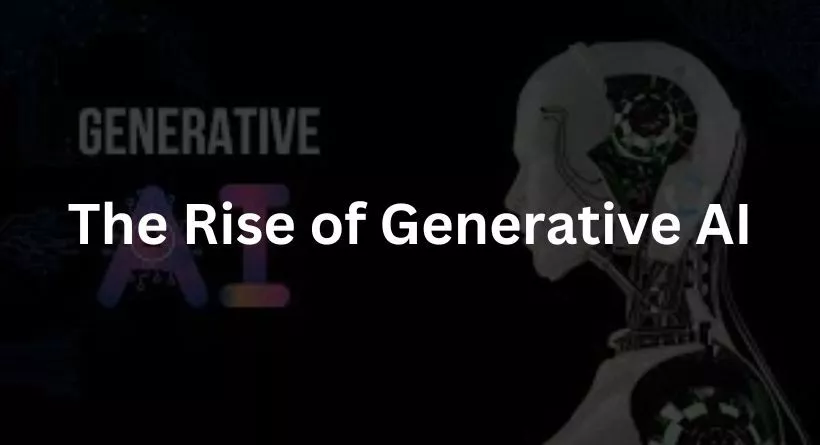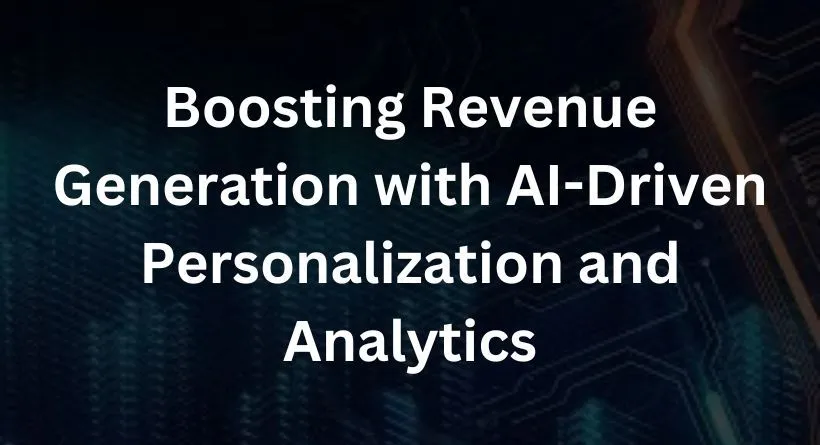
Powering the Future: How Generative AI is Transforming the Energy and Utilities Industry
Generative AI is igniting a new era of innovation and efficiency in the energy and utilities industry, redefining the way we harness, distribute, and consume resources to power a sustainable and connected world.
The energy and utilities industry plays a crucial role in powering our modern world, providing the essential resources required to sustain our lives and fuel our economies. In the face of unprecedented challenges such as climate change, aging infrastructure, and fluctuating demand, the need for innovative solutions has never been more urgent.
The Rise of Generative AI

Generative AI, an advanced form of artificial intelligence capable of generating new data from existing data, has emerged as a powerful tool that can help drive transformation and shape the future of the energy and utilities industry.
In this article, we will explore the various ways in which generative AI is revolutionizing the energy and utilities sector, focusing on areas such as grid management, renewable energy, demand forecasting, and infrastructure planning.
You may also like reading: Embracing Change: How Generative AI is Transforming the Insurance Landscape
Optimising Grid Management and Performance with Generative AI
One of the most significant applications of generative AI in the energy and utilities industry lies in optimizing grid management and performance.
Energy and utility grids generate vast amounts of data, including consumption patterns, load distribution, and performance metrics. By harnessing the power of generative AI, companies can analyze this data to identify patterns, trends, and inefficiencies, and make more informed decisions about their grid operations.
Generative AI can help utility operators optimize their grid configurations, allocate resources more efficiently, and predict and prevent potential performance issues. For example, AI-driven algorithms can be used to dynamically balance loads based on real-time demand, ensuring optimal grid performance and minimizing the risk of congestion or service disruptions.
Enhancing Renewable Energy Integration and Management
As the global demand for clean and sustainable energy continues to grow, the integration and management of renewable energy sources, such as solar and wind, have become increasingly important.
Generative AI can play a pivotal role in enhancing renewable energy integration and management by providing valuable insights into resource availability, production capacity, and demand patterns. By analyzing data from various sources, including weather forecasts, historical production data, and sensor data from renewable energy facilities, generative AI can generate accurate predictions of renewable energy output and help utility companies optimize their resource allocation and grid management strategies.
This can lead to more efficient and reliable integration of renewable energy sources, reducing greenhouse gas emissions and advancing global sustainability goals.
Improving Demand Forecasting and Resource Allocation
Accurate demand forecasting is essential for energy and utility companies to ensure the efficient allocation of resources, minimize operational costs, and maintain a stable and reliable power supply.
Generative AI can dramatically enhance the accuracy and granularity of demand forecasts by analyzing vast amounts of data, including historical consumption patterns, weather data, and socioeconomic factors. By leveraging AI-generated forecasts, energy and utility companies can optimize their resource allocation, reduce energy waste, and better manage peak demand periods. This can lead to significant cost savings, as well as improved grid stability and reliability.
Intelligent Infrastructure Planning and Deployment
Generative AI can also revolutionize the way energy and utility companies plan and deploy their infrastructure, such as power plants, transmission lines, and substations.
By analyzing vast amounts of data, including geographic, demographic, and usage information, AI-driven algorithms can identify the most efficient and cost-effective locations for new infrastructure deployments. In addition, generative AI can be used to model and simulate various infrastructure configurations, helping energy and utility companies optimize their infrastructure design and make more informed decisions about capacity planning and resource allocation. This can lead to significant cost savings, as well as improved grid performance and reliability.
Streamlining Operations and Maintenance with AI-Driven Automation
Generative AI has the potential to dramatically streamline the operations and maintenance of energy and utility networks, reducing costs and improving efficiency. AI-driven algorithms can be used to automate routine tasks, such as network monitoring, fault detection, and root cause analysis, freeing up human resources to focus on more strategic and high-value activities.
In addition, generative AI can help energy and utility companies predict and prevent potential equipment failures, minimizing downtime and ensuring optimal network performance. By embracing AI-driven automation, energy and utility companies can reduce operational costs, enhance network reliability, and maintain a competitive edge in the industry.
Boosting Revenue Generation with AI-Driven Personalization and Analytics

In an increasingly competitive energy and utilities market, companies are constantly seeking new ways to grow their revenues and attract new customers.
Generative AI offers a powerful solution, enabling energy and utility companies to leverage AI-generated insights and analytics to develop more targeted marketing campaigns, identify new revenue opportunities, and optimize their pricing strategies.
By analyzing customer data and preferences, generative AI can generate personalized offers and promotions that resonate with individual users, driving higher conversion rates and customer loyalty. Furthermore, AI-driven analytics can help energy and utility companies identify untapped market segments, optimize their product and service portfolios, and make more informed decisions about pricing and bundling strategies.
Embracing AI-Driven Innovation
As the energy and utilities industry continues to evolve, embracing AI-driven innovation is essential for companies to stay ahead of the curve and maintain a competitive edge. This requires not only adopting generative AI technologies but also fostering a culture of innovation and data-driven decision-making within their organizations.
By investing in AI-driven solutions and building the necessary infrastructure, talent, and processes, energy and utility companies can harness the full potential of generative AI and drive transformative change across their operations. This will enable them to adapt and thrive in a rapidly evolving market, delivering enhanced service quality, reliability, and sustainability.
Conclusion
Generative AI is a game-changer in the energy and utilities industry, offering new opportunities for efficiency, sustainability, and growth. By harnessing the power of generative AI, companies can overcome challenges and lead the way in shaping a more connected and sustainable world.
FAQs
How does Generative AI specifically help in reducing greenhouse gas emissions in the energy and utilities industry?
Generative AI aids in optimizing the integration of renewable energy sources, such as solar and wind, by analyzing data like weather forecasts and historical production. By doing so, it can predict renewable energy output accurately, leading to more efficient and reliable integration. This, in turn, contributes to reducing greenhouse gas emissions.
What role does Generative AI play in personalized marketing campaigns for energy and utility companies?
Generative AI can analyze customer data and preferences to generate personalized offers and promotions. This capability enables energy and utility companies to create targeted marketing campaigns that resonate with individual users, ultimately driving higher conversion rates and customer loyalty.
How can energy and utility companies foster a culture of innovation and data-driven decision-making within their organizations?
Embracing AI-driven innovation involves not only adopting generative AI technologies but also building the necessary infrastructure, talent, and processes. Energy and utility companies can facilitate this cultural shift by investing in AI solutions, promoting a data-driven mindset, and encouraging creative thinking among their teams.
In what ways can Generative AI assist in grid management to ensure reliability and minimize congestion or service disruptions?
Generative AI can analyze vast amounts of data from energy and utility grids, identifying consumption patterns and inefficiencies. By using AI-driven algorithms, utility operators can dynamically balance loads based on real-time demand, thus optimizing grid performance and reducing the risk of congestion or service disruptions.
How can Generative AI improve the efficiency of operations and maintenance in energy and utility networks?
Generative AI has the potential to streamline operations and maintenance by automating routine tasks like network monitoring, fault detection, and root cause analysis. This automation frees up human resources for more strategic activities. Additionally, AI can predict and prevent potential equipment failures, minimizing downtime and ensuring optimal network performance. This results in reduced operational costs and enhanced network reliability.





